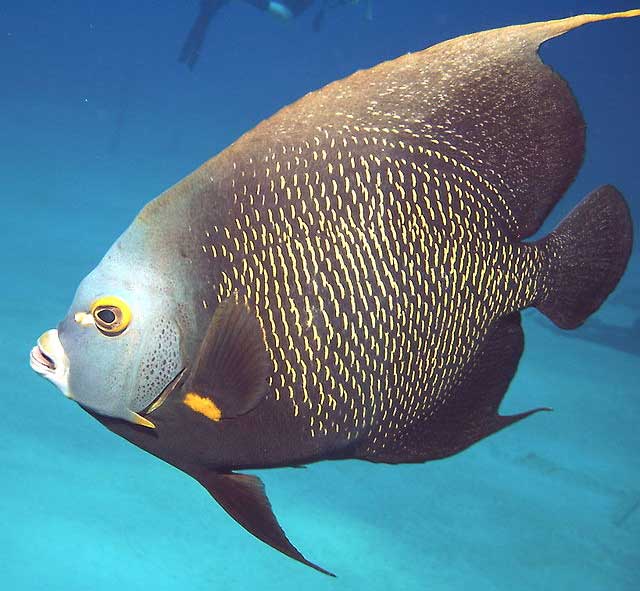Pomacanthus paru, Author: William Eburn (*)
The French angelfish, Pomacanthus paru, is a large angelfish of the family Pomacanthidae, found in the western Atlantic from Florida and the Bahamas to Brazil, and also the Gulf of Mexico and the Caribbean, including the Antilles, and the eastern Atlantic from around Ascension Island and St. Paul's Rocks, at depths of between 2 and 100 m. Length is up to 41 cm. The French angelfish is common in shallow reefs, usually in pairs, often near sea fans. It feeds on sponges, algae, bryozoans, zoantharians, gorgonians and tunicates. Juveniles tend cleaning stations where they service a broad range of clients, including jacks, snappers, morays, grunts, surgeonfishes, and wrasses. At the station the cleaner displays a fluttering swimming and when cleaning it touches the clients with its pelvic fins. Coloration in adults is black, the scales of the body, except those at the front from nape to abdomen, being rimmed with golden yellow; a broad orange-yellow bar at pectoral absent; dorsal filament yellow; chin whitish; outer part of iris yellow; eye narrowly rimmed below with blue. Juveniles are black with vertical yellow bands. Reproduction is oviparous and these species are monogamous. Spawning pairs are strongly territorial, with usually both members vigorously defending their areas against neighboring pairs. Its flesh is considered good quality and it is marketed fresh. It has been reared in captivity. * "Pomacanthus paru". FishBase. Ed. Ranier Froese and Daniel Pauly. June 2006 version. N.p.: FishBase, 2006. Retrieved from "http://en.wikipedia.org/" |
|

